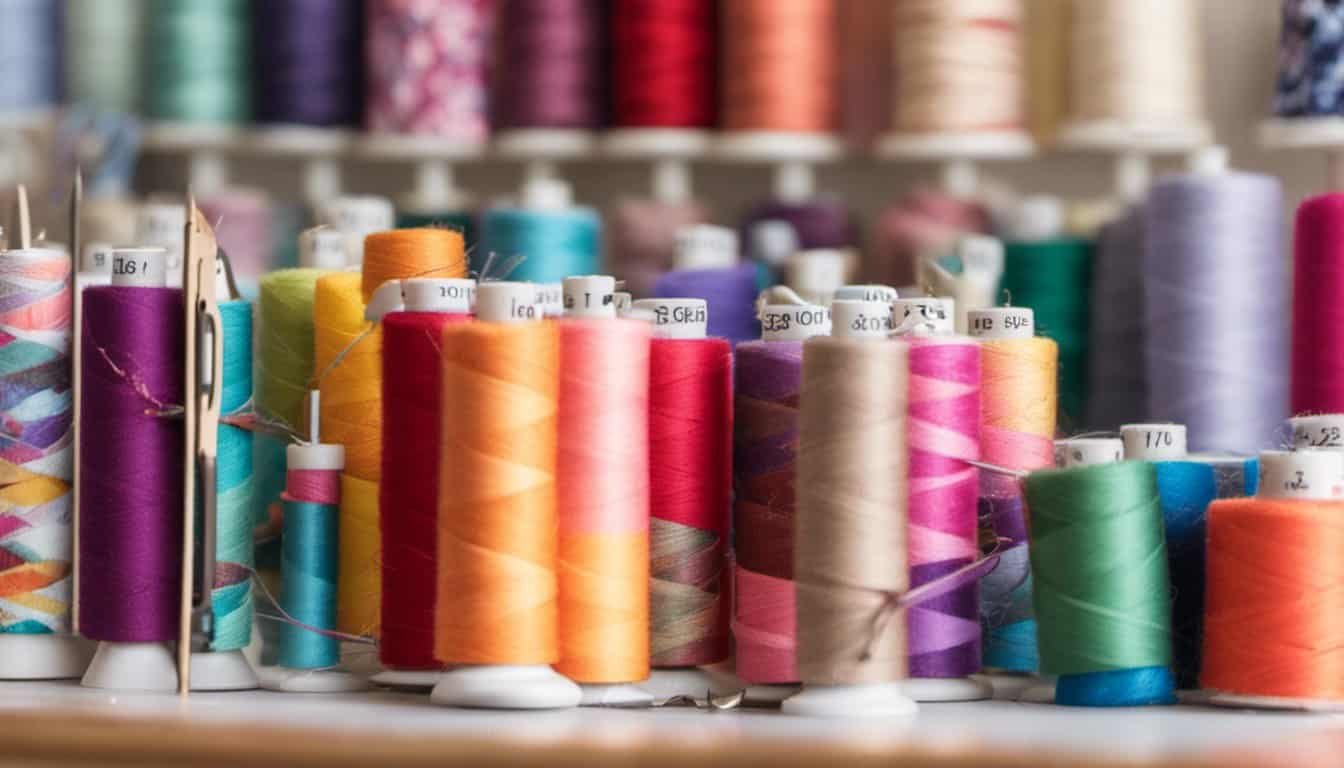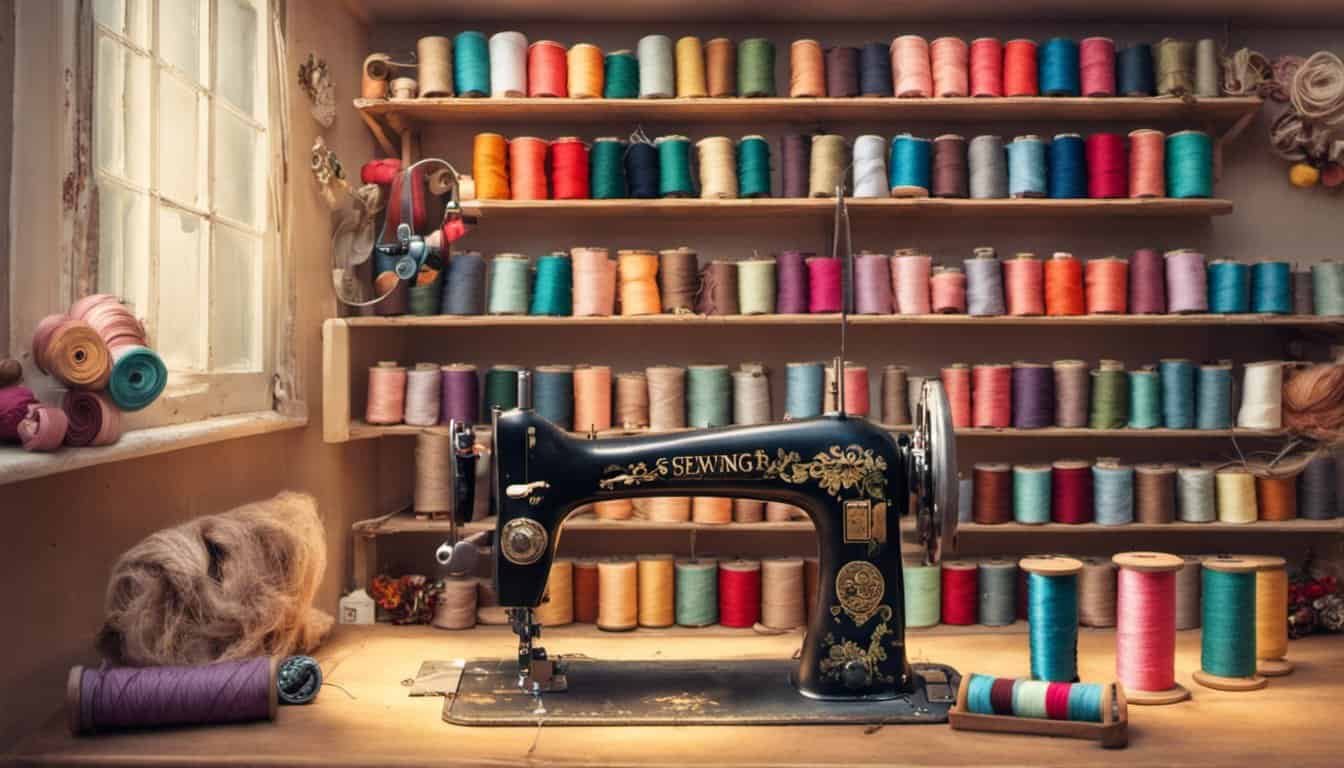Are you a sewing enthusiast who wants to keep your sewing machine running smoothly? Well, you’ve come to the right place! In this article, we’ll explore the age-old question: should sewing machines be oiled? Many people wonder if oiling their sewing machine is necessary or if it’s just an extra step. We’ll dive into the importance of oiling, how often you should do it, and the benefits it can bring to your sewing experience. So, grab your thread and needles, and let’s get started!
Have you ever wondered why some sewing machines make strange noises or don’t seem to work as well as they used to? One possible reason is a lack of proper lubrication. Oiling your sewing machine is essential for its smooth operation. In this article, we’ll discuss the importance of oiling and how it can prevent unnecessary wear and tear on your machine. We’ll also provide you with some tips on how to oil your machine correctly, so you can keep it running like a well-oiled (pun intended) sewing machine!
What is the Purpose of Oiling a Sewing Machine?
Oiling a sewing machine is an essential maintenance task that every sewer should be familiar with. Just as you would oil a car or a bike chain, oiling your sewing machine helps to keep it running smoothly and prevents unnecessary wear and tear. But what exactly is the purpose of oiling a sewing machine? Let’s dive in!
1. Lubrication – The primary purpose of oiling a sewing machine is to provide lubrication to its moving parts. Sewing machines have numerous small components, such as gears, levers, and rotating hooks, that work together to create those beautiful stitches. Over time, these parts can become dry and start to friction, leading to increased wear and potentially damaging your machine. By applying oil, you ensure that these parts move smoothly, reducing friction and extending the life of your machine.
2. Preventing Rust – Sewing machines are made mostly of metal, and like any metal object, they are susceptible to rust, especially if you live in a humid area. Oiling your sewing machine creates a protective barrier on its metal surfaces, preventing oxidation and rust formation. This is vital to maintaining the longevity of your machine and ensuring it continues to run smoothly.
3. Quieter Operation – If you’ve ever used a sewing machine that squeaks or makes unusual noises, you know how irritating it can be. Regular oiling not only extends the life of your machine but also helps to reduce noise during operation. The oil acts as a lubricant, reducing friction between the moving parts and creating a quieter sewing experience.
4. Improved Stitch Quality – When your sewing machine is properly oiled, it can produce better stitch quality. The smooth movement of the machine’s parts allows for more precise and consistent stitches. With a well-oiled machine, you’ll have cleaner and more professional-looking results in your sewing projects.
Remember, different sewing machines have different oiling requirements, so always refer to your machine’s manual for specific instructions. By taking a few minutes to oil your machine regularly, you’ll ensure its smooth operation, prevent premature wear, and enjoy many hours of happy sewing. So grab that oil bottle and give your sewing machine some TLC!
Benefits of Regularly Oiling a Sewing Machine
Keeping your sewing machine well-maintained is essential for smooth operation and longevity. One crucial aspect of sewing machine maintenance is regular oiling. Oiling your sewing machine offers a multitude of benefits that can greatly improve your sewing experience. Let’s explore some of these benefits:
1. Smooth Operation
Regular oiling ensures that the moving parts of your sewing machine are properly lubricated. This lubrication allows the machine to run smoothly, reducing friction and preventing unnecessary wear and tear. As a result, you’ll experience fewer jams, skipped stitches, and needle breakages, leading to a more enjoyable sewing experience.
2. Prevents Rust Formation
Sewing machines can be susceptible to rust, especially if they are exposed to humid environments. By oiling your machine regularly, you create a protective barrier that helps prevent rust formation on metal parts. This not only prolongs the life of your machine but also ensures the integrity of its parts, allowing for consistent and reliable sewing results.
3. Reduces Noise
A sewing machine that hasn’t been oiled for a while can become quite noisy during operation. The lack of lubrication can cause the moving parts to rub against each other, resulting in irritating sounds. However, with regular oiling, you can significantly reduce the noise levels, making your sewing sessions more peaceful and enjoyable.
4. Improves Stitch Quality
Regular oiling plays a critical role in achieving impeccable stitch quality. When the machine is well-lubricated, the fabric moves smoothly under the needle, resulting in clean and uniform stitches. This is particularly important when working with delicate fabrics or intricate stitch patterns where precision is key. By maintaining a well-oiled machine, you’ll be able to produce professional-looking results every time.
By understanding the benefits of regularly oiling your sewing machine, you can ensure that it operates at its best and delivers top-notch results. Remember to consult your machine’s manual for specific oiling instructions, as different machines may have varying requirements. Don’t overlook this crucial aspect of maintenance – give your sewing machine the care it deserves and enjoy seamless sewing for years to come.

How Often Should a Sewing Machine be Oiled?
As an expert in all things sewing, embroidery, knitting, and crafts in general, you know that regularly oiling your sewing machine is key to its smooth operation and longevity. But how often should you actually be oiling it?
The answer to this question depends on how frequently you use your machine. If you’re an avid sewing enthusiast and spend several hours each week at your machine, you should aim to oil it every 8-10 hours of use. This will ensure that all the moving parts are properly lubricated and prevent any potential wear and tear.
On the other hand, if you only sew occasionally, perhaps for a few hours every month, you can extend the time between oiling sessions to once every 3-4 months. While less frequent than for heavy users, this still allows for sufficient lubrication and maintenance of your machine’s performance.
It’s important to note that different types of sewing machines may have specific oiling requirements. Be sure to consult your machine’s manual for manufacturer guidelines on oiling frequency and the type of oil to use. Following the manual’s recommendations will help you maintain your machine’s optimal performance and prevent any potential damage.
In addition to regular oiling, there are a few signs that indicate it’s time to give your machine some lubrication. If you notice an increase in noise, stitch skipping, or a general decrease in the smoothness of operation, it’s a good idea to oil your machine, even if it’s not due for a regular oiling session yet.
« Discover the Hidden Gem of Sewing Machine Retail: Exclusive Insights on the Location of Sewing Machines Plus
Learn the Surprising Difference Between Sewing and Darning – You Won’t Believe What You’ve Been Missing Out On »
Remember, keeping your sewing machine properly lubricated is essential for smooth and efficient operation. By following the recommended oiling schedule and paying attention to any signs of wear or decreased performance, you’ll ensure that your machine serves you well for years to come.
Step-by-step Guide on Oiling a Sewing Machine
Keeping your sewing machine well-oiled is essential for its smooth operation and longevity. Not only does regular oiling prevent wear and tear, but it also helps to maintain optimal stitch quality and reduce noise. If you’re unsure of how to oil your sewing machine properly, follow this step-by-step guide:
- Refer to the Manual: Before you begin oiling, consult your sewing machine’s manual for specific instructions. Different machines have different oiling requirements, so it’s crucial to follow the manufacturer’s guidelines.
- Prepare the Machine: Start by turning off your sewing machine and unplugging it from the power source. Make sure the needle is raised to its highest position for easy access to the bobbin area.
- Clean the Machine: Before oiling, take a moment to clean any visible dust or lint from the machine. Use a soft brush or a lint roller to gently remove any debris that may have accumulated.
- Identify the Oil Points: Locate the oil points specified in your machine’s manual. These are typically marked with small arrows or dots. Common oiling points include the hook race, bobbin case, and needle bar.
- Apply the Oil: Using a high-quality sewing machine oil, apply a small drop or two of oil to each designated oiling point. Be careful not to over-oil, as excess oil can lead to messy stitches and may attract more dust and lint.
- Spread the Oil: Move the machine’s handwheel backward and forward a few times to help spread the oil throughout the machine. This will ensure that the oil reaches all the necessary parts and facilitates smooth operation.
- Wipe Excess Oil: After spreading the oil, use a clean lint-free cloth or tissue to wipe away any excess oil that may have dripped. This step helps to prevent oil stains on your fabric and keeps your workspace clean.
- Test the Machine: Once you’ve completed the oiling process and wiped away excess oil, plug in your sewing machine and test it out. Run a few stitches on a scrap fabric to ensure that everything is running smoothly.
Remember, the frequency of oiling depends on how often you use your sewing machine. Heavy users should oil their machines every 8-10 hours of use, while occasional users can do so every 3-4 months. However, if you notice any signs of increased noise, stitch
Common Mistakes to Avoid When Oiling a Sewing Machine
When it comes to oiling your sewing machine, there are a few common mistakes that many people make. These mistakes can potentially damage your machine or cause it to malfunction. To ensure that your sewing machine stays in optimal condition, it’s important to avoid these pitfalls. So, let’s take a look at some of the most common mistakes and how to avoid them:
- Using the wrong type of oil: One of the biggest mistakes people make is using the wrong type of oil for their sewing machine. It’s crucial to use sewing machine oil specifically designed for this purpose. Other oils, such as WD-40 or household lubricants, can actually damage the machine and lead to costly repairs.
- Over-oiling the machine: It’s tempting to apply more oil than necessary, thinking it will provide better lubrication. However, over-oiling can lead to excessive build-up and cause the machine to become clogged. Remember, a little goes a long way when it comes to oiling your sewing machine. Follow the manufacturer’s instructions for the appropriate amount of oil to use.
- Neglecting to clean the machine first: Before you start oiling your sewing machine, take the time to clean it thoroughly. Dust, lint, and debris can accumulate in the machine over time, restricting its performance. Use a soft brush or a vacuum cleaner to remove any dirt from the machine, ensuring that it’s clean before applying the oil.
- Failing to identify the correct oiling points: Every sewing machine has specific oiling points that need lubrication. Consult your machine’s manual to locate these points. Applying oil to the wrong areas can lead to ineffective lubrication and potentially damage the machine.
Remember, proper maintenance is key to keeping your sewing machine in excellent working condition. By avoiding these common mistakes, you’ll be on your way to ensuring smooth operation and longevity for your beloved machine.

Regular Maintenance for Optimal Performance
Keeping your sewing machine well-maintained is essential for its optimal performance. Apart from regular oiling, there are a few other maintenance tips you can follow:
- Cleaning: Regularly clean the bobbin case, feed dogs, and needle plate to prevent the accumulation of lint and debris.
- Changing Needles: Replace the needle after every project or every 8-10 hours of sewing to avoid skipped stitches or damage to the fabric.
Alternative Methods to Lubricate a Sewing Machine
When it comes to keeping your sewing machine in top condition, oiling is often the go-to method. However, there are alternative ways to lubricate your machine that you may find useful. Let’s explore a few options:
1. Sewing Machine Lubricant Spray
Instead of using traditional oil, there are sewing machine lubricant sprays available on the market. These sprays are specifically designed to provide the necessary lubrication without the mess and potential buildup that oil can sometimes create. Simply spray a small amount onto the designated oiling points and move the handwheel to distribute the lubricant.
2. Silicone Lubricant
Silicone lubricant is another viable option for lubricating your sewing machine. It comes in the form of a spray or a liquid. Silicone is known for its excellent lubricating properties and its resistance to high temperatures. Be sure to only apply a small amount to the designated areas as excessive silicone can attract dust and lint.
3. Dry Lubricants
Dry lubricants, such as graphite or Teflon-based lubricants, can also be used to reduce friction and keep your machine running smoothly. These lubricants come in a powdered or liquid form and are specifically formulated to provide long-lasting lubrication without leaving any residue. Apply a small amount to the necessary parts and distribute it by moving the handwheel.

4. White Lithium Grease
White lithium grease is a heavy-duty lubricant that is commonly used in automotive and industrial applications. Although it may not be specifically made for sewing machines, it can be used as an alternative lubricant in a pinch. Use caution and apply a very small amount, as too much grease can cause buildup and affect the machine’s performance.
Remember, each sewing machine is different, so it’s essential to consult your manual or contact the manufacturer before using any alternative lubricants. Additionally, make sure to clean your machine thoroughly before applying any lubricant to avoid trapping dirt or debris, which can lead to clogs or damage to your machine.
Signs that a Sewing Machine Needs Oiling
Keeping your sewing machine well-oiled is crucial for its smooth operation and longevity. As an expert in all things sewing, embroidery, knitting, and crafts in general, I’m here to help you identify the signs that your sewing machine is in need of some oiling.
1. Increased Noise: If your sewing machine starts making more noise than usual, it could be a sign that it needs oiling. Over time, the moving parts of the machine can become dry and cause friction, resulting in a louder and less efficient sewing experience.
2. Stiff or Jerky Movement: Is your machine not gliding smoothly along the fabric? Does it feel stiff or jerky when you try to sew? This could be a sign that the internal parts are lacking lubrication. Oiling your machine will help ensure that everything moves effortlessly, allowing you to create seamless stitches.

3. Skipped Stitches: Do you notice that your stitches are skipping or not forming properly? This might mean that your sewing machine needs oiling. Insufficient lubrication can cause the needle and other parts to get stuck, resulting in inconsistent stitching.
4. Uneven or Tight Stitches: If the tension of your stitches is inconsistent or overly tight, it could be a sign that your sewing machine needs oiling. Lack of lubrication can affect the smooth movement of the thread, leading to uneven or tightly pulled stitches.
5. Difficulty Turning the Handwheel: The handwheel on your sewing machine should turn smoothly and easily. If you find it difficult to turn or it feels stiff, it’s a clear indication that your machine needs some oiling. Regular lubrication will ensure that the handwheel moves effortlessly, enabling you to manually position the needle when needed.
Conclusion
By following the step-by-step guide provided in this article, you now have the knowledge and tools to properly oil your sewing machine. Remember to consult your machine’s manual for specific instructions and to thoroughly clean the machine before applying any lubricant.
In addition to traditional sewing machine oil, alternative lubricants such as sewing machine lubricant spray, silicone lubricant, dry lubricants, and white lithium grease can also be used. However, it is important to consult your manual or contact the manufacturer before using any alternative lubricants to ensure compatibility with your machine.

Recognizing the signs that indicate your sewing machine needs oiling, such as increased noise, stiff or jerky movement, skipped stitches, uneven or tight stitches, and difficulty turning the handwheel, will help you maintain the smooth operation and longevity of your machine.
By regularly oiling your sewing machine, you can keep it running smoothly and efficiently, ensuring that your sewing projects are a breeze. Happy sewing!

















